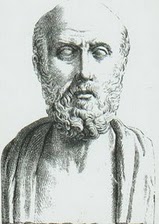Music therapy is both an allied health profession and a field of scientific research which studies correlations between the process of clinical therapy and biomusicology, musical acoustics, music theory, psychoacoustics and comparative musicology.
It is an interpersonal process in which a trained music therapist uses music and all of its facets—physical, emotional, mental, social, aesthetic, and spiritual—to help clients to improve or maintain their health.
Music therapists primarily help clients improve their observable level of functioning and self-reported quality of life in various domains (e.g., cognitive functioning, motor skills, emotional and affective development, behavior and social skills) by using music experiences (e.g., singing, songwriting, listening to and discussing music, moving to music) to achieve measurable treatment goals and objectives.
Referrals to music therapy services may be made by a treating physician or an interdisciplinary team consisting of clinicians such as physicians, psychologists, physical therapists, and occupational therapists.
Music therapists are found in nearly every area of the helping professions. Some commonly found practices include developmental work (communication, motor skills, etc.) with individuals with special needs, songwriting and listening in reminiscence/orientation work with the elderly, processing and relaxation work, and rhythmic entrainment for physical rehabilitation in stroke victims.
The Turco-Persian psychologist and music theorist al-Farabi (872–950), known as "Alpharabius" in Europe, dealt with music therapy in his treatise ''Meanings of the Intellect'', where he discussed the therapeutic effects of music on the soul.
Robert Burton wrote in the 17th century in his classic work, ''The Anatomy of Melancholy'', that music and dance were critical in treating mental illness, especially melancholia.
It is considered one of the expressive therapies
212.jpg)


